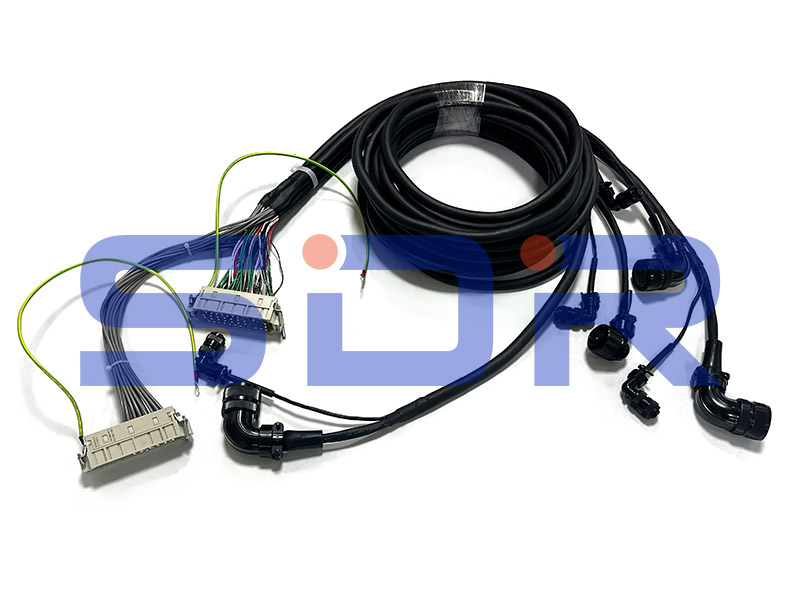Fanuc Robot Cables are a critical component of an industrial robot system, ensuring stable power and signal transmission between the robot and its control system, sensors, and actuators.As the world's leading manufacturer of industrial robots, Fanuc's cable products play a key role in a variety of industrial applications.

Main types
1. Power cables:Power cables are responsible for transmitting power from the power source to the robot control system and servo motors. These cables typically have high current carrying capacity and high temperature resistance to ensure stable power supply.
2. Signal cables: Signal cables are used to transmit signals from sensors and other input devices to the robot control system. These cables need to be well shielded to minimize signal interference and ensure precise control.
3. Data communication cables: Data communication cables are used to exchange data between the robot control system and other devices. These cables need to support high-speed data transmission to ensure that the robot can respond and process commands quickly.
4. Servo cables: Servo cables connect the robot servo motors to the control system and are responsible for transmitting motor control signals and feedback information. They need to be highly resistant to abrasion and high temperatures in order to cope with the high speed movements of the robot.
Main Characteristics
1. High temperature resistance: Fanuc Robot Cables usually have excellent high temperature resistance, can work stably in a high temperature environment, to ensure the long-term operational reliability of the robot.
2. Abrasion resistance: The outer layer of the cable is usually made of abrasion-resistant materials, such as polyurethane (PU) or polyvinyl chloride (PVC), to resist mechanical abrasion and environmental impact.
3. Electrical Performance:High quality cable materials and design ensure good electrical performance, including low resistance, high dielectric strength and good signal transmission.
4. Flexibility:Fanuc Robot Cables have good flexibility for easy installation and wiring in robot moving parts, adapting to the robot's complex movement path.
Installation and Maintenance
1. Installation requirements:Installation should ensure that the cable is properly connected to avoid excessive bending or stretching. Use appropriate fixtures and protective conduits to ensure that the cables are protected from mechanical damage during use.
2. Regular Maintenance:Regularly check the appearance and function of the cable to ensure that there is no wear, cracks or other damage. Regularly test the electrical performance of the cables and replace damaged cables in time to avoid system failure.
Common Failures and Solutions
1. Cable breaks:Cable breaks may result in loss of signal or power interruption. Inspect the cable path to ensure that no physical damage has been sustained and replace broken cables promptly.
2. Damaged insulation: Damaged insulation can lead to electrical shorts or interference. Regularly inspect cable insulation and replace any damage immediately to ensure safety and performance.
3. Signal interference:Signal interference may affect the accuracy of robot control. Check the shielding effect of cables to ensure proper connection and reduce external interference.
Fanuc Robot Cables play an important role in industrial robot systems, ensuring the stable transmission of power and signals. By selecting high-quality cables with proper installation and maintenance, the reliability and performance of the robot system can be effectively enhanced. Whether in power transmission, signal communication or data exchange, Fanuc robot cables demonstrate their key role in industrial applications.